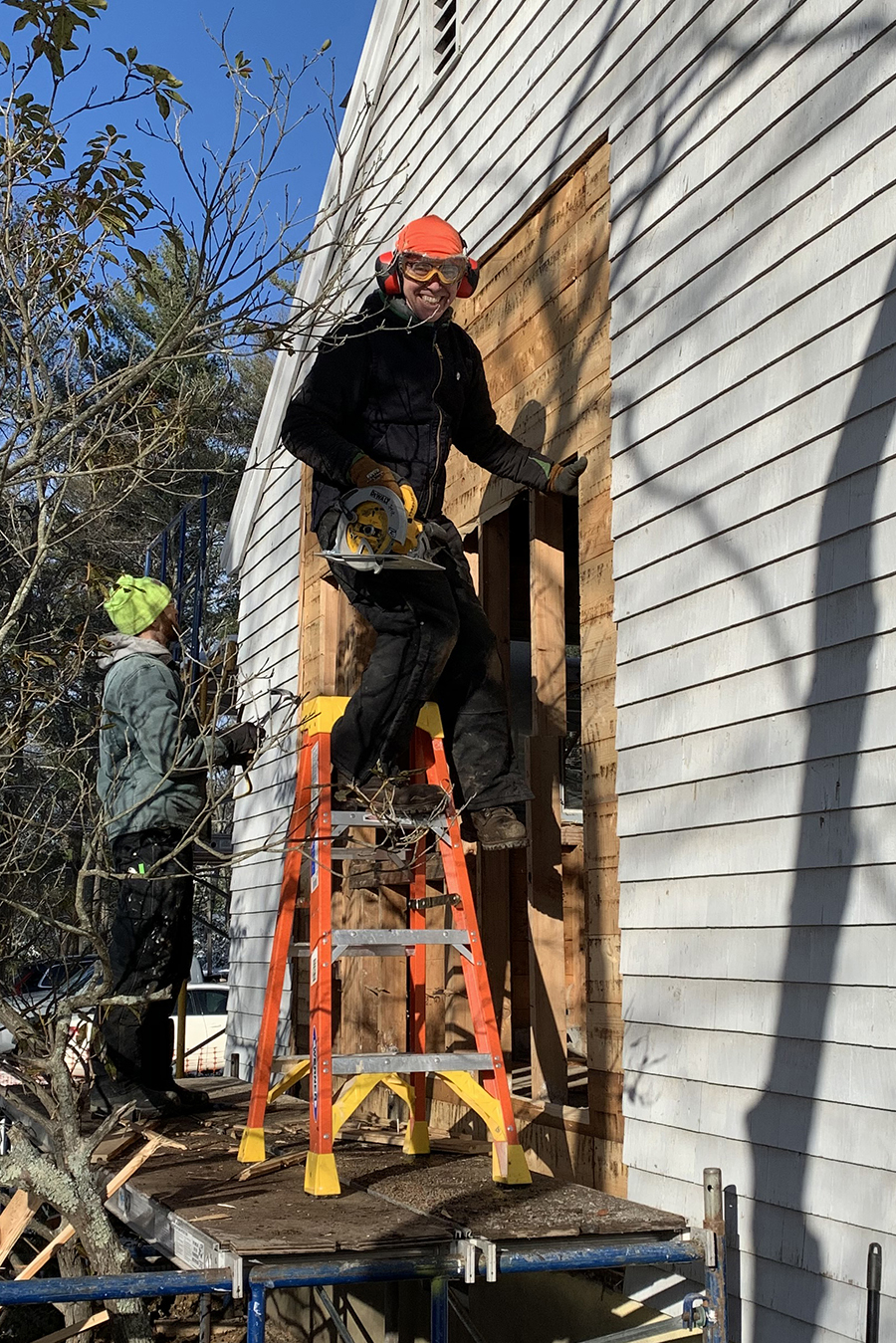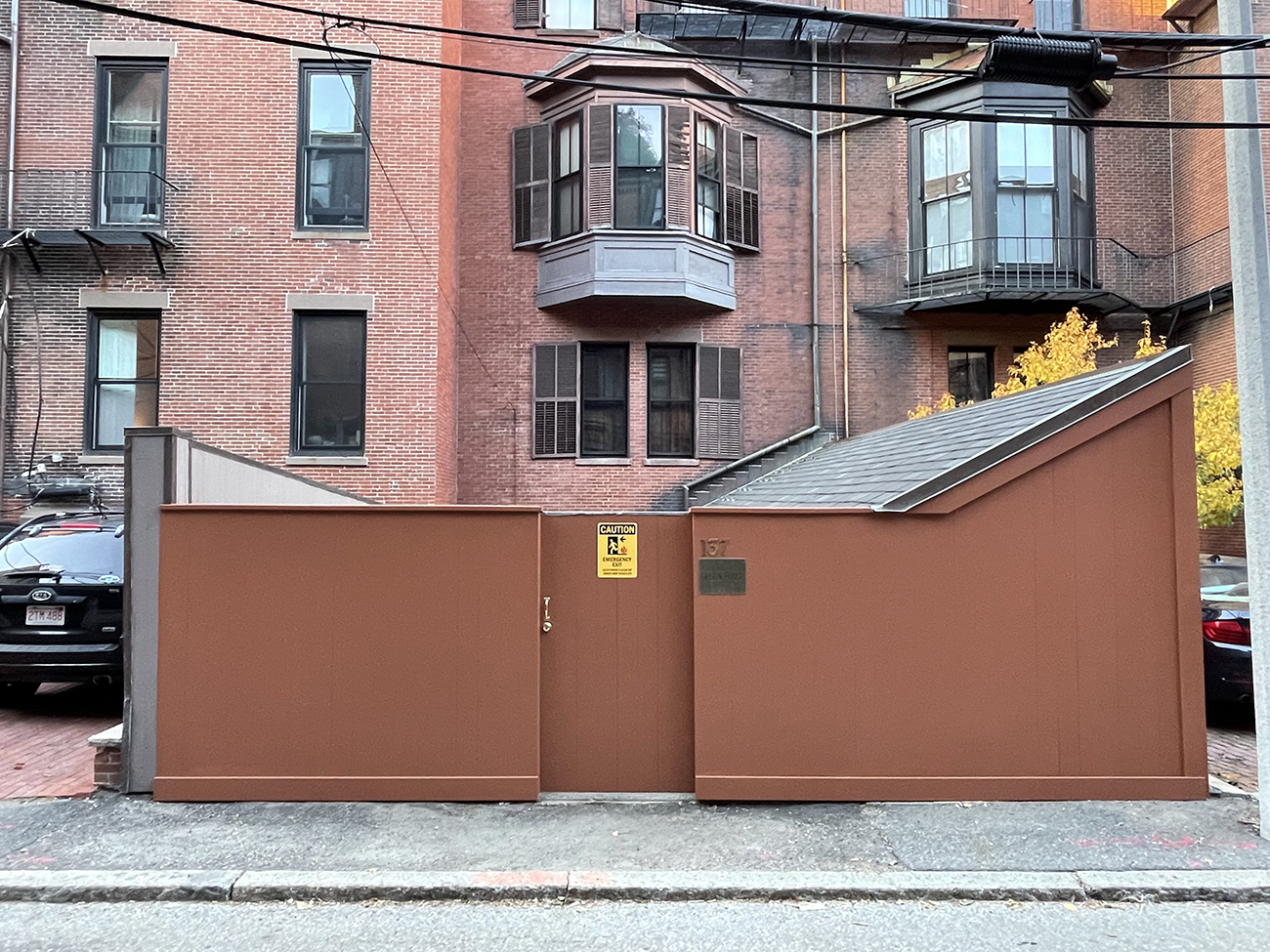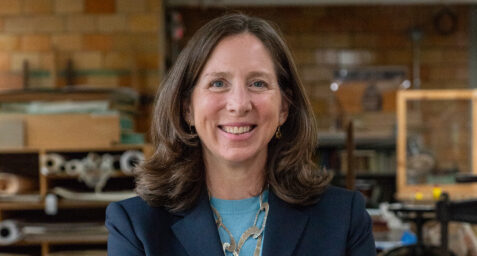How Living in Boston Shapes a Career in the Trades

Right in the introduction of its Wikipedia entry, you will learn that Boston “has one of the highest costs of living…though it remains high on world livability rankings.” While it is true that paying the rent in (and around) this city is not for the faint of heart, it is also true that you tend to get what you pay for. Of course there’s the rich history; I myself was drawn to North Bennet Street School (NBSS) because it is the oldest trade school in America, and I wanted to reach as far back in time as possible to learn my particular trade, Carpentry. But there is also a drive that defines Boston’s citizens: a requisite hustle, a competitive edge.

Carpentry Department Head and Instructor Peter Smith PC ’04 reminds his students every year that they are “looking for a career, not just a job” in the trades, and while he fellow Instructor and Brock Leiendecker PC ’16 teach the fundamentals of fine, frame-to-finish carpentry, it is the city itself that provides an unparalleled marketplace for those skills. Learning everything I could about Boston and its people has been critical to my success in the trades.
Before (and while) I attended NBSS, I worked a retail job not far from the School for a number of years, so I knew the neighborhood well before enrolling. I learned to tell tourists from locals by understanding what draws people to the city, versus what keeps them here. As a once-upon-a-time newcomer myself, I had to keep an open mind, I had to stay sharp, and I had to work hard to assimilate. I’m from a rural place that is culturally very far from the busy streets of Boston, but as tough as adjusting was, it was absolutely crucial to nurturing my ability to navigate a career in which I’m essentially selling my abilities.
Like so many, I loved to go into the North End for pizza and cannoli, and little by little, I came out with insights on entrepreneurship and gentrification; the staying power of work ethic amid the tide of “progress” that defines an elite coastal city like ours. There was so much growth in the city, yet at the same time, there was so much character to preserve. The Big Dig buried much of the traffic that once snarled the city’s landscape, and then suddenly, luxury apartment building after luxury apartment building began to pop up in the newly vacant space. Rapidly. And with these came a whole new breed of consumer in the Boston economy. Without high pedigree, or fancy parchment, I reasoned that a trade was likely the most accessible way for me to cultivate my own value in this well-heeled, local economy.
For many years I lived in Somerville, and being a somewhat crunchy type, I would often ride my bike to the end of the Minuteman Bikeway, then all the way out to Walden Pond in Concord, to commune with nature. When I got there, my favorite part of the trip was always the hike into the woods to find the little replica of the cabin Henry David Thoreau built, where inevitably I’d begin meditating on the value of self-reliance, and become inspired to build something beautiful of my own someday.
And when I needed a break from the throngs of weekend shoppers, (I did work retail, after all), I’d always be saved by a lunch break at the most improbable sanctuary of the Boston Public Library’s Central Courtyard, a hidden gem that is completely tucked away, yet somehow smack dab in the middle of the eternally packed Copley Square. Modeled after the Palazzo della Cancelleria in Rome, it would magically take me to a place that was somehow far away, yet deep within. Those experiences taught me about the impact good design can have on user experience and mental health.

The takeaway of this journey of urban self discovery and self realization is that either end of this spectrum is open to those who have the ability; I am free to sell the skills I have learned in any way that suits me. My first job out of school was with a residential renovation company, gutting Colonial era row houses in Charlestown and rebuilding them with sleek, modern interiors. One of my recent solo projects this past year was to meticulously recreate a period-authentic alley fence and a shed wall for the Gibson House Museum, a National Historic Landmark in the swanky Back Bay neighborhood, very near the Boston Common.
Yes, Boston’s collegiate tuitions are notoriously steep, yet there is arguably no better city in which to earn a free education. Some quick, back of the napkin math will tell you that the out of pocket expense for a trade school like NBSS (and keep in mind, an accredited institution like NBSS qualifies for federal student financial aid—see the School’s Financial Aid page for more info), leveraged by a dash of ingenuity and a healthy side of hustle, can yield a far better return as an investment than the cost of many of the high-dollar, four year degrees that the city is known for selling. In the grand scheme, the best investment I could have made was to learn a trade here.
Boston is a City on a Hill; its ideals have always been lofty, but its realities have likewise always been stark. Trying to reconcile the two is what gives Boston its indomitable spirit. Yes, Boston is humbling. Daunting. Scary, even. But the long-game reward for learning its ways and putting down roots here is that eventually, you’ll be a Boston-trained tradesperson who gets to charge Boston trade prices, too. The artist Tom Sachs perhaps puts my favorite spin on it: “The reward for good work is more work.”


